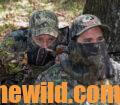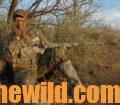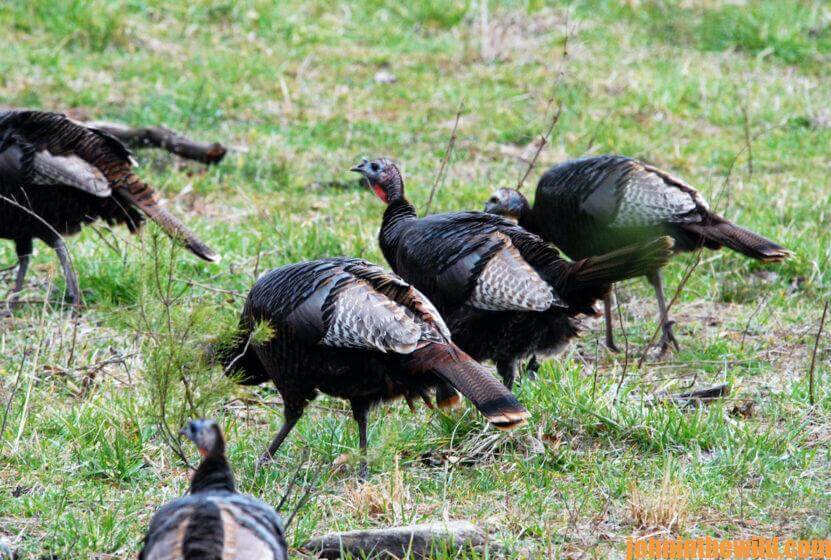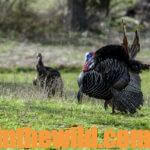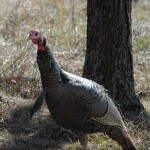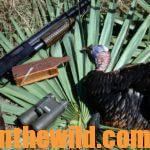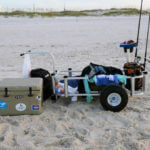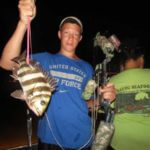Editor’s Note: The game of turkey hunting is played in the gobbler’s backyard and on his terms. The strategies required to bag a tom turkey often may make war games look simple. The hunters who have amassed the most techniques, encountered the most turkeys and know what to do when the turkey doesn’t do what he’s supposed to do, will come home with bronze barons for dinner more often than other hunters. By taking this turkey-hunting quiz and learning what to do to bag turkeys, you can sharpen the skills you’ll need in the woods when you play the game with the wisest wizards in the woods. (See the correct answer to each question at the end of each day).
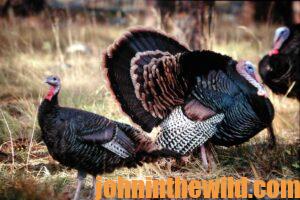 Question No. 8: One of the toughest turkeys to take in the spring is a gobbler traveling with a harem of hens. Calling a gobbler away from his harem is difficult. What can you do to call a gobbler away from his harem?
Question No. 8: One of the toughest turkeys to take in the spring is a gobbler traveling with a harem of hens. Calling a gobbler away from his harem is difficult. What can you do to call a gobbler away from his harem?
a) bust up the flock, scatter the turkeys and call the gobbler in to the hunter.
b) try and slip in close enough to the flock to shoot the gobbler, when the bird’s standing away from the hens.
c) attempt to call the hens to you, hoping they’ll bring the gobbler with them.
d) do some soft clucking, purring and yelping to sound like the most-alluring hen the gobbler ever has heard.
Question No. 9: The worst thing that can happen when calling to a turkey is to have the gobbler circle you and come up behind you. You can hear the turkey strutting and drumming not 12 feet from you. What’s the best tactic to use to take this turkey?
a) sit still, and hope the turkey walks in front of you.
b) roll over on your stomach, and try and shoot the turkey.
c) jump up, and attempt to shoot the turkey.
d) use your mouth caller, and try to call the turkey to the front of you.
 Question No. 10: The best tactic for fall turkey hunting is scattering the flock and trying to call the turkeys back together again. What age bird does this tactic usually help take?
Question No. 10: The best tactic for fall turkey hunting is scattering the flock and trying to call the turkeys back together again. What age bird does this tactic usually help take?
a) jakes (one year old gobblers).
b) longbeard gobblers.
c) any type of gobblers.
Question No. 11: Why do you use the owl hoot when hunting turkeys? To:
a) call turkeys.
b) locate gobblers.
c) keep turkeys from coming too fast and too quickly.
d) locate hens.
ANSWERS:
Answer to Question No. 8: (c) attempt to call the hens to you, hoping they will bring the gobbler with them. Hens have a pecking order just like gobblers do. Many times the boss hen – if she hears what she believes to be another boss hen trying to lure away her gobbler – will go to investigate her rival with the idea of running the rival off. In so doing, she’ll pull the flock to the hunter. The hunter who can sit still and be calm enough to let hens walk by him may get a shot at the gobbler.
 Answer to Question No. 9: (a) sit still and hope the turkey walks in front of you. Rarely can a turkey hunter jump-up and shoot a turkey before that turkey runs off. Even the hunter’s rolling over gives the woods wizard too much notice of danger to catch the bird unprepared. If you try and call to the tom, the turkey will have to be out of his mind to figure he can’t see a hen that he can hear that close by. So once again, patience is the key to getting a shot at this bird. Most of the time in this situation, only the most-skilled hunter will be able to sit still long enough to bag his bird.
Answer to Question No. 9: (a) sit still and hope the turkey walks in front of you. Rarely can a turkey hunter jump-up and shoot a turkey before that turkey runs off. Even the hunter’s rolling over gives the woods wizard too much notice of danger to catch the bird unprepared. If you try and call to the tom, the turkey will have to be out of his mind to figure he can’t see a hen that he can hear that close by. So once again, patience is the key to getting a shot at this bird. Most of the time in this situation, only the most-skilled hunter will be able to sit still long enough to bag his bird.
Answer to Question No. 10: (a) jakes (one-year-old gobblers). The jake is a young, inexperienced bird. His No. 1 concern is being separated from the flock and finding mama. So after the flock’s scattered, the jake is most often the gobbler the hunter will have a chance to shoot in the fall.
Answer to Question No. 11: (b) locating gobblers. Owl hooting will encourage turkeys to gobble. Many times when the turkey hunter is trying to move in closer on a gobbler to call to him, he needs to be able to keep up with that turkey’s location without giving hen calls that will make the turkey come to him. So, the turkey will gobble to the hunter’s owl hooting and give away his location without actually coming to the hunter.
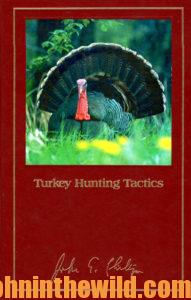 To learn more about hunting turkeys successfully, visit John E. Phillips’ Amazon book page at https://www.amazon.com/John-E.-Phillips/e/B001HP7K6O. For even more information from many of the top turkey hunters and callers, go to the book, “Turkey Hunting Tactics,” https://www.amazon.com/gp/product/B007PK9B2G/ref=dbs_a_def_rwt_hsch_vapi_taft_p2_i3,
To learn more about hunting turkeys successfully, visit John E. Phillips’ Amazon book page at https://www.amazon.com/John-E.-Phillips/e/B001HP7K6O. For even more information from many of the top turkey hunters and callers, go to the book, “Turkey Hunting Tactics,” https://www.amazon.com/gp/product/B007PK9B2G/ref=dbs_a_def_rwt_hsch_vapi_taft_p2_i3,
available in Kindle, print and Audible. You may have to copy and paste this link into your browser. (When you click on the book, notice on the left where Amazon says you can read and hear 10% of the book for free). On the right side of the page and below the offer for a free Audible trial, you can click on Buy the Audible book.
Tomorrow: The No. 1 Turkey Call

